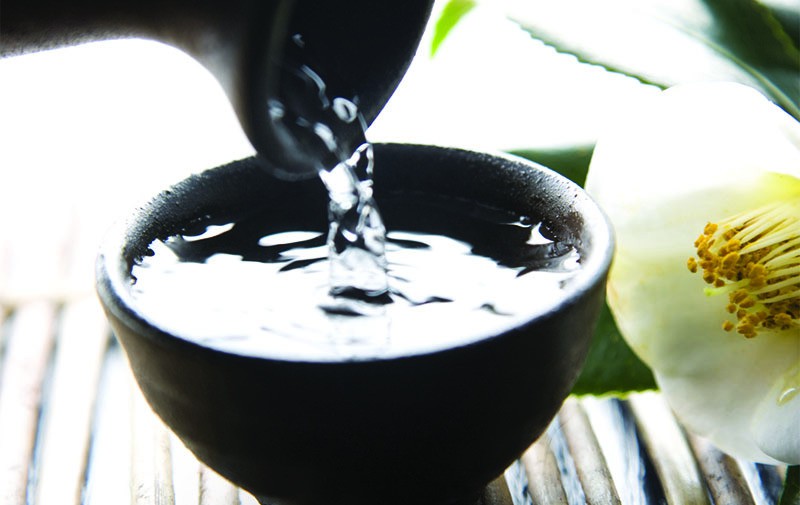
It may be the sexiest pairing of cheese and liquid I’ve ever had: a Selles-sur-Cher with a sake. The cheese felt like a celebration of spring and cream and grass and goats. The sake seemed far more reserved, broad, and gentle, until it hit the cheese, when it unfurled a silken torrent of flavor. The two melded seamlessly, one playing up the other, the cream intertwining with the sake. It was amazing—and entirely unexpected.
SAKE LINGO
Junmai:
Pure sake, just rice and water, from rice polished to at least 70 percent of its original size
Honjozu:
Includes a small addition of distilled alcohol to boost fragrance
Gingo:
Made from rice polished to at least 60 percent of its original size
Daigingo:
Made from rice milled to at least 50 percent of its original size; tends to be the most delicate
Nigori:
Cloudy sake, meaning it hasn’t been fully filtered; more often sweet than dry
Kimoto:
The original brewing method, long and slow, which gives rise to more earthy, funky flavor
If there’d been white wine on the table, I would have headed in a sauvignon blanc direction—light, bright, crisp, and grassy, with high acidity to cut through all that richness—and ignored anything broad and creamy, for fear the combination would collapse under its own weight. But sake is an entirely different pleasure, one that works under different rules with cheese.
We’re talking the good stuff, of course—the sort you’ll find in the refrigerated case at your wine store, where they respect the fragility of its flavors; the ones made by small breweries using nothing but highly polished rice, water, and koji, the special mold that’s responsible for the transformation of grain into gorgeously expressive liquid.
The most overt difference is acidity—sake simply has less of it than wine does, a factor that reads in texture most of all. Even the lightest, brightest-tasting sakes have a roundness to their feel. If you ascribe to the idea that higher acidity makes for easier pairing with food (which I generally do, when it comes to wine), it’s reasonable to assume that sake would be less versatile than wine.
But it’s not so. What sake has instead is alcohol—usually 15 to 16 percent, compared to the 13 to 14 of most modern whites. Rather than reading as a peppery burn, the alcohol comes off as richness, a satin texture that seems to envelop anything it encounters in a supple embrace.
Alcohol can also leave the impression of sweetness, even when a sake is bone dry—a positive advantage when it comes to cheese, which generally loves a little sweetness on the side. (Think of all those fruit jams that come on a platter, or the finesse with which sweet wines handle challenging cheeses.)
And as an extra plus, sake has a high umami factor—those savory flavors that can read as an earthiness, a meatiness, or even cheese-rind-like funk. Together with sake’s sweetness, it’s a one-two punch of cheese-ready flavor.
The biggest challenge in pairing cheese and sake, in fact, is simply figuring out what’s in the bottle. And it’s not just the language barrier. “Sake is more process driven than wine,” says Rick Smith, who, with his partner Hiroko Furukawa, runs Sakaya, a sake store in New York City. While he allows that there are regional differences, they’ve faded over time.
“It’s more about style, about techniques that have been passed down from generation to generation.” In other words, you have to know a brewery’s style to really know what to expect.
Smith, who subjects every sake in the store to an unofficial “cheese test,” offers a key bit of advice: “Look for kimoto sake,” he advises, referring to the old way of making sake, without adding lactic acid to speed the fermentation along. “By waiting for the lactic acid and letting the fermentation take time, you get more gamy, earthy notes.” (It also makes for a little more acidity.) He also suggests looking for daigingo sakes—the most refined bottlings, made from rice polished to less than half its original size—especially for fresh cheeses and sheep’s milk cheese; these sakes tend to be the most ethereal in flavor, more focused on florals, light fruit, and herbs than umami and earth, and higher in acidity.
Shinji Mizutani, who regularly pairs sake and cheese at 1or8, his restaurant in Brooklyn, New York, agrees with Smith’s guidelines, adding that he’s had great luck with aged sakes when it comes to nutty mountain cheeses, and with nigori sakes—cloudy, unfiltered sakes—with blue cheese. But other than these general guidelines, the only rules for pairing sake and cheese are that there are no rules. “Just play with it, work with it,” he says. “That’s what we do.”
SOURCES
Both these stores have an impeccable, well-cared-for selection of sake and knowledgeable staff who will help you in person or online:
- 324 E. Ninth St. New York, NY
- 212.505.7253
- 560 Hayes St. San Francisco, CA
- 415.355.9555
SAMPLER
A few cheese-friendly sakes, from lightest to richest/sweetest:
Dewatsuru Kimoto Junmai ($35)
Born Muroka Junmai Daiginjo Nama Genshu ($60)
Kamoizumi “Summer Snow” Nigori Gingo ($34/500 ml)




